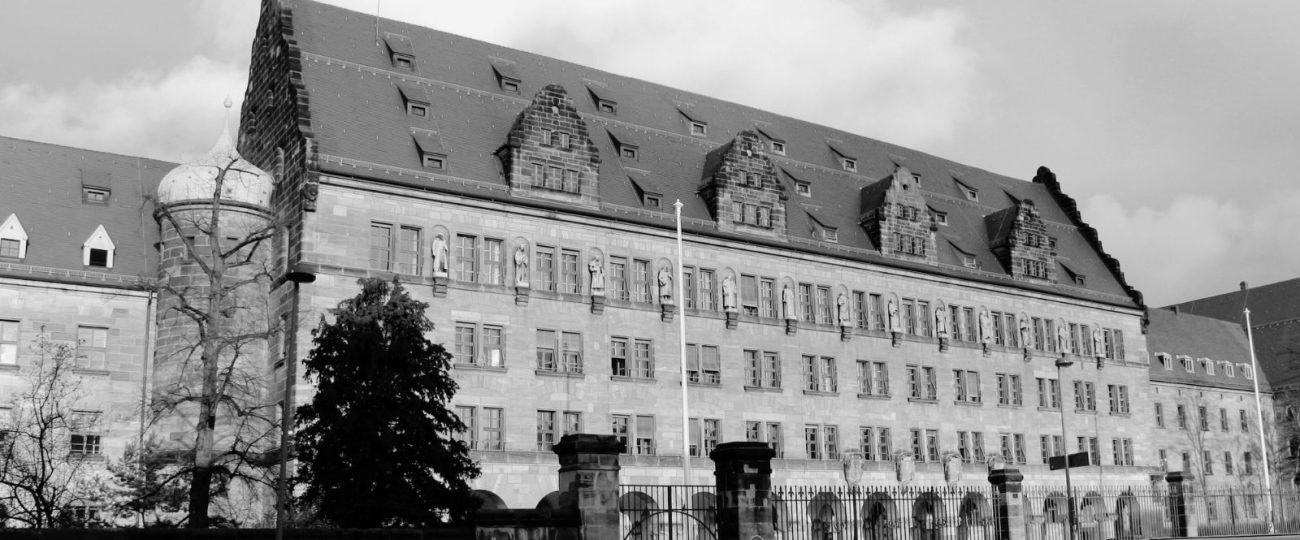What Happened On November 20th?
On November 20, 1945, the Nuremberg Trials began in Courtroom 600 of the Palace of Justice in Nuremberg, Germany. Judges from the Allied powers—Great Britain, the United States, the Soviet Union, and France—gathered to prosecute high-ranking Nazi officials. For the first time in history, an international tribunal sought to hold individuals accountable for crimes against humanity, war crimes, crimes against peace, and conspiracy. These proceedings symbolized the Allies’ commitment to justice following the atrocities of World War II.
Robert H. Jackson, the chief prosecutor for the United States, opened the trial with a statement emphasizing the gravity of the crimes and the need for accountability. He declared that the trial would demonstrate the world’s resolve to prevent future atrocities. The defendants, seated in the dock, included Hermann Göring, Rudolf Hess, and Joachim von Ribbentrop. These men had served as architects of Nazi policies, orchestrating aggressive wars, systemic genocide, and the persecution of millions.
Nuremberg was chosen as the location for its symbolic and logistical advantages. The city, once a hub of Nazi propaganda and home to the 1935 racial laws, now served as a platform for exposing the regime’s crimes. The Palace of Justice, which had remained largely intact despite wartime bombings, offered the necessary space for the trial. Courtroom 600, modified to accommodate multilingual proceedings, became the epicenter of the Allied pursuit of justice.
Prosecutors presented an overwhelming array of evidence to support their case. They introduced official documents, photographs, and survivor testimonies that revealed the systematic planning and execution of the Holocaust. Records detailed deportation orders, operational plans for concentration camps, and quotas for mass executions. Film footage from liberated camps depicted the horrific conditions endured by prisoners, including starvation, forced labor, and mass graves. These visuals provided undeniable proof of the atrocities.
Survivors shared harrowing accounts of their experiences in labor and death camps. Witnesses described the brutality of forced labor, the dehumanizing medical experiments conducted on prisoners, and the methods of execution used by camp guards. One survivor recalled being forced to sort belongings of victims sent to the gas chambers, a task intended to strip individuals of dignity. These testimonies offered a powerful human dimension to the factual evidence presented by prosecutors.
In 1943, the Moscow Declaration formalized the commitment to prosecute Axis leaders for war crimes. After Germany’s surrender in May 1945, representatives from the United States, Great Britain, the Soviet Union, and France established the International Military Tribunal. While disagreements initially arose over trial procedures, the Allies ultimately agreed on a framework that combined common law and civil law traditions. This ensured that the trials adhered to principles of fairness while addressing the unprecedented scope of the crimes.
The charges against the defendants fell into four categories: crimes against peace, war crimes, crimes against humanity, and conspiracy to commit these acts. Hermann Göring, as head of the Luftwaffe, coordinated military campaigns and played a direct role in persecuting Jewish citizens. Rudolf Hess, once Hitler’s deputy, supported policies that expanded Nazi aggression and strengthened the regime’s ideological grip. Albert Speer, who oversaw armament production, admitted his complicity in supporting the war effort but denied knowledge of the Holocaust.
Nuremberg’s history added weight to the trials. The city had hosted grand Nazi rallies and served as the venue for the racial laws that laid the groundwork for genocide. By reclaiming the city for the trials, the Allies transformed it into a stage for justice. Evidence presented included reports from Einsatzgruppen, which documented mass shootings in Eastern Europe. These reports revealed that mobile killing squads executed tens of thousands of civilians, including Jews, Romani people, and political prisoners. Such evidence exposed the chilling efficiency with which these operations were carried out.
Simultaneous translation, introduced during the trial, allowed participants to follow the proceedings in English, French, German, and Russian. This innovation ensured clarity and fairness, setting a precedent for future international courts. Translators worked under immense pressure to maintain accuracy, as errors could undermine the integrity of the trial. Their efforts enabled a seamless flow of communication across linguistic barriers.
The tribunal also targeted organizations that had enabled the Nazi regime’s crimes. The SS, Gestapo, and Nazi Party Leadership Corps faced charges for their roles in facilitating genocide and systemic violence. By prosecuting these groups, the Allies aimed to dismantle the institutional structures that had supported the atrocities. This approach emphasized the collective responsibility of organizations in addition to individual accountability.
Financial records revealed how the Nazi regime profited from its victims through the confiscation of property and assets. These economic gains were meticulously documented, highlighting the intersection of genocide and exploitation. Psychiatric evaluations conducted on the defendants offered insight into their personalities. Göring, for example, exhibited charm and intelligence but refused to express remorse, while Speer sought to reframe his role to appear less culpable.
The trial concluded with sentences that varied widely. Göring received the death penalty but avoided execution by ingesting cyanide in his cell. Speer received a 20-year prison sentence, while others faced life imprisonment or acquittal. These verdicts sparked debates over fairness, with some critics arguing that certain sentences failed to reflect the gravity of the crimes. The tribunal’s decisions, however, established important legal precedents that extended beyond the immediate outcomes.
By October 1946, the Nuremberg Trials had concluded. They rejected the defense of obedience to orders and established that individuals could be held accountable for crimes against humanity, even when acting under state authority. These principles shaped the foundations of modern international law, influencing subsequent tribunals addressing atrocities in Rwanda, the Balkans, and beyond. The Nuremberg Trials set a standard for justice that continues to resonate in global efforts to address crimes against humanity.





